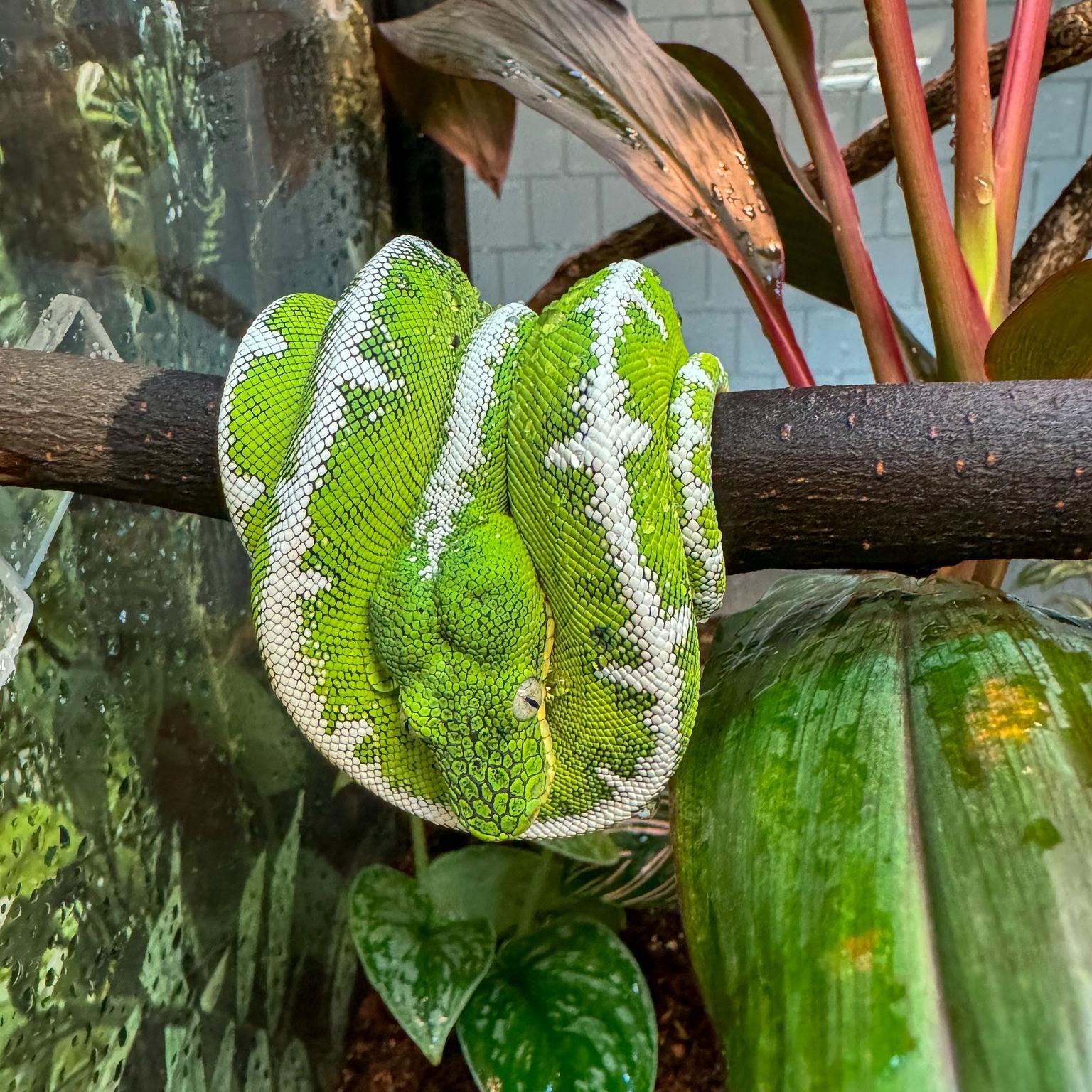- Habitat and Characteristics of the Emerald Tree Boa
- Adaptations and Behavior in the Wild
- Role within the Ecosystem
- Conservation Status and Threats
- Greenville Zoo’s Contribution and Education Initiatives
Emerald tree boas, like Bateston, are fascinating creatures native to the lush Amazon River basin. These striking reptiles are known for their vivid green coloration and are a spectacle of nature’s brilliance. Their natural habitat, comprising the dense rainforest canopy, offers a plethora of branches and leaves ideal for their arboreal lifestyle. Spending most of their lives in trees, the emerald tree boa uses its incredible camouflage to blend seamlessly with the foliage, avoiding predators while hunting for prey. The boa’s vibrant coloration is complemented by a series of white or yellow markings, making it visually distinguishable in its natural setting.
These snakes exhibit several physical adaptations that facilitate their survival within such complex ecosystems. For instance, their prehensile tails provide excellent grip, allowing them to secure a stable position among branches. Their strong muscular bodies enable them to constrict prey with ease, a critical hunting technique given that they predominantly consume small mammals and birds. At around 6 to 9 feet long at maturity, emerald tree boas demonstrate size variation dependent on the region and available resources. These adaptations highlight the snake’s evolutionary resilience, allowing them to thrive in diverse environmental conditions.
The behavior of the emerald tree boa highlights its evolutionary success. They are primarily nocturnal, which means they are most active during nighttime hours. This nocturnal nature serves as a strategic advantage in avoiding diurnal predators and hunting in a less competitive time frame. Furthermore, emerald tree boas are ambush predators. They stay motionless, waiting patiently for unsuspecting prey to come close before implementing a quick and decisive strike. This hunting strategy is efficient, conserving the snake’s energy for essential processes like digestion and reproduction.
The ecological role of the emerald tree boa extends beyond its predatory behavior. As a mesopredator, the emerald tree boa helps maintain the balance within its ecosystem. By regulating the populations of smaller mammals and birds, it contributes to the ecological stability and health of the Amazonian forests. Moreover, these boas play a part in the seed dispersal process, as evidenced by the seeds found in the stomachs of their prey. This unexpected contribution underscores the interconnectedness of species within rainforests, highlighting the complex web of biodiversity in these regions.
However, the emerald tree boa’s continued existence faces threats from various anthropogenic activities. Habitat destruction, particularly deforestation in the Amazon, poses a significant danger to their survival. As their habitats are degraded or completely destroyed, the number of suitable areas for these snakes to live, hunt, and reproduce diminishes drastically. Furthermore, illegal wildlife trade is a prominent threat since these snakes are often captured for the exotic pet industry. These activities necessitate robust conservation measures aimed at habitat protection and targeted educational initiatives to raise awareness about the importance of biodiversity and species preservation.
The Greenville Zoo, home to the newly arrived Bateston, plays an essential role in the conservation and education around this species. Zoos no longer function merely as spaces for display; they are pivotal in the conservation of endangered and vulnerable species. Through Breeding Programs and Captive Management Strategies, the zoo seeks to bolster the population of species like the emerald tree boa. These initiatives help maintain genetic diversity and can serve as a backup population should wild numbers continue to decline.
Educational programs offered by institutions such as Greenville Zoo are crucial. These programs are designed to engage and educate the public about species like the emerald tree boa. By disseminating information on the role these snakes play in their ecosystems, zoos are fostering a deeper understanding and appreciation among visitors. Such awareness can lead to increased public advocacy for conservation efforts, motivating actions that support biodiversity protection on both local and global scales.
As we continue to explore more about Bateston and his species, it’s clear that understanding the intricacies of his life is not just fascinating; it’s essential for the efforts to conserve the natural world. By highlighting these remarkable animals and their role in the ecosystem, Greenville Zoo invites us all to participate in their ongoing story of survival and adaptation. We are reminded that every creature, no matter how small or seemingly isolated, holds significance in the larger tapestry of life on Earth. As caretakers of these scaly friends, it falls upon us to safeguard their future.
*****
Source Description
A scaly new friend recently slithered his way over to Ektopia. Meet Bateston! 🐍
Bateston is an emerald tree boa and is the newest Greenville Zoo resident! These stunning snakes are native to the Amazon River basin and are arboreal, meaning they spend the majority of their time in trees!


